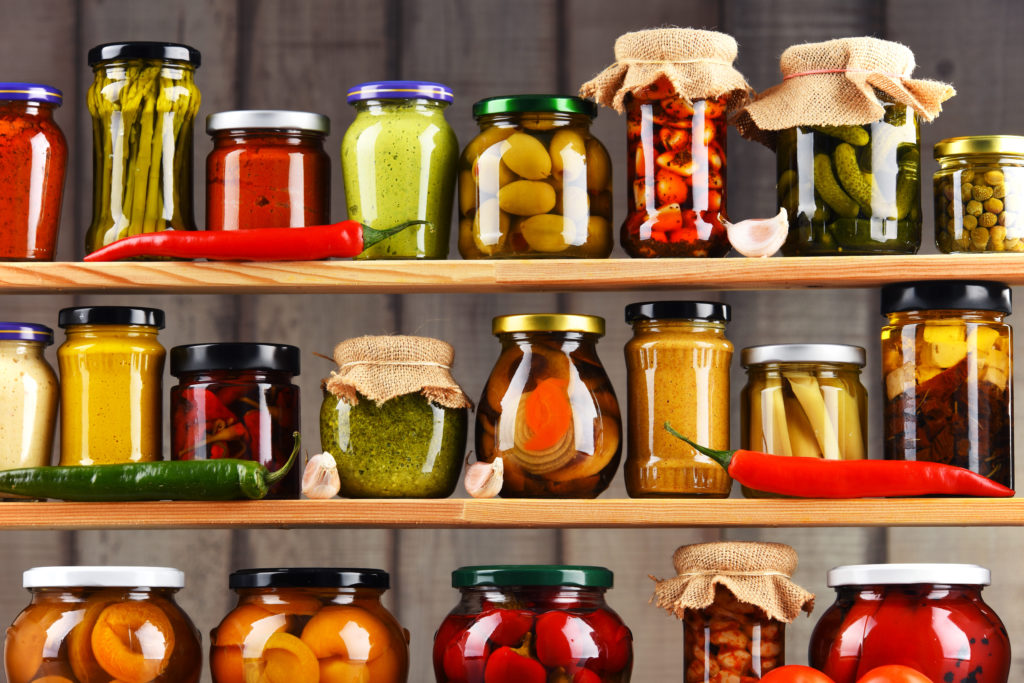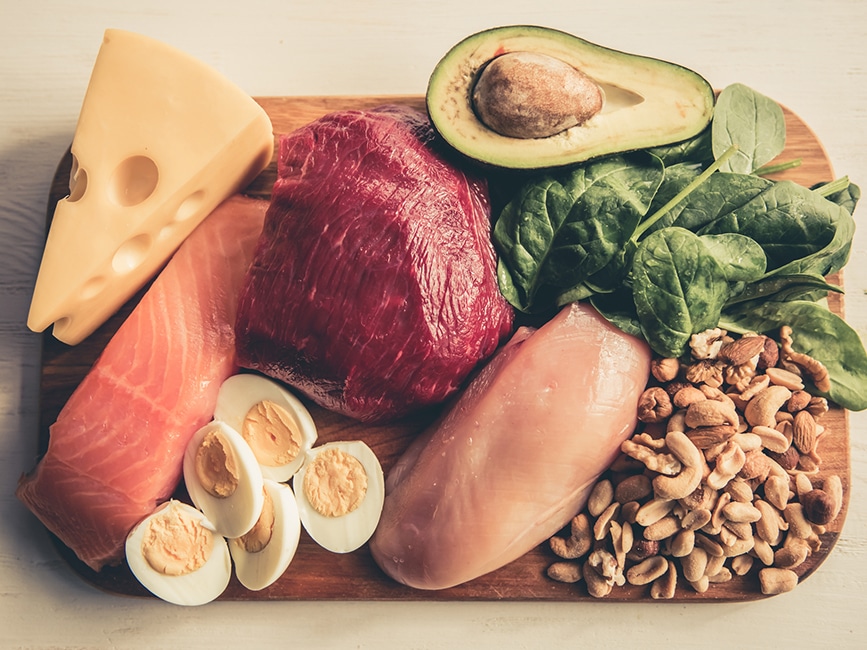A Healthy Kitchen Begins with Organization
Does your kitchen pass the Marie Kondo test? If the processed food in your pantry sparks too much joy, you may need to let it go.

By now, many of you have probably “KonMari-ed” your closets, offices and garages. This uncluttering of one’s life made famous by organizational guru Marie Kondo gave a lot of people cleaner homes, more functional work spaces and peace of mind. Similarly, the tidying guru’s approach is also a great first step toward creating a healthy kitchen and a healthier you.
The baseline for better eating habits can be measured by what lives—or lurks—inside of your pantry, refrigerator and freezer. Certainly, by cleaning out and then restocking with nutrient-rich whole foods as opposed to highly processed rubbish devoid of nourishment, you can shape a healthy kitchen that improves the odds of eating well and developing better habits.
See also: Nutrition Pantry Raid
Plan Your Healthy Kitchen Clean Out
Resetting your kitchen seems like it should be easy enough. However, if you try to tackle it in a single sweep, it can overwhelm even the most determined effort. Before you begin ejecting things, consider the following ideas to ensure that you are intentional, have a plan and can expel things incrementally.
Envision Your Ideal Eating Plan
Let’s begin with a reality check. Above all, know that there is no ideal eating plan except for the one you can sustain over the long haul. Simply put, define reasonable parameters of what healthy eating looks like for you. For example, the 80-20 rule is a good launching pad. “I will strive to eat fresh, whole, minimally processed foods 80% of the time. I will give myself grace to sensibly indulge during the other 20%.” Therefore, when you shop to restock, the ingredients you bring home to your new, healthy kitchen should reflect this ratio and the framework you’ve envisioned.
Remember to be kind to yourself and don’t overthink it. Eventually, you will discover the groove and hacks that work for you.
Commit To a Literal Kitchen Cleanse
Begin with a ruthless clean out. You will find food items that make you cringe, laugh and cause you to shake your head in wonder. Every last item in your larder must be taken out and evaluated for keeping, tossing or donating. In addition, wipe down each item you keep, organize it by food group and then return it to its newly sanitized home. Embrace the process and own each decision. It’s truly cathartic!
Purging Tips for a Healthy Kitchen
- First, if the item is expired, unrecognizable, nearly empty, frostbitten, stale or otherwise will not be used, trash it and don’t look back. This includes the frozen turkey soup you made two Thanksgivings ago and never ate. Reminisce for a moment about your clever good intentions, but then set it free.
- Next, if the item is highly processed, sugar- or sodium-laden or lacking any redeeming nutritional value, say buh-bye.
- Finally, purge each kitchen zone (pantry, refrigerator, freezer) on different days. Do it when you are alone and can unpack the lot and make a mess without upsetting your entire household. It can take time to do this right. Allow for focused, uninterrupted blocks to accomplish each phase.
Expel That Which Brings You Joy, Sort of
Depending on what’s in your current inventory, Kondo’s advice to “only keep items that spark joy” might be counterintuitive when it comes to certain foods. Be honest with yourself. If the item contradicts the 80-20 you’ve defined (for example, fudge sauce you cannot resist, and in which you regularly bathe), get rid of it for now. But, give yourself permission to revisit it in the future once you have a better handle on your eating patterns.
Tidy by Category and Location
In parallel to KonMari’s principle to “tidy by category,” do the same with foods, but also organize them into common areas where they will live. If possible, invest in airtight, see-through containers and a labeling system (masking tape and a Sharpie will work). The result will be a decluttering of each zone that gives you a single-glance method to track inventory. This also will help to cut food waste.
See also: How to Organize a Pantry
Here are some examples of how to group foods by category and store them together.
In the Pantry
- Dried goods/staples: beans, rice, whole grains, pastas, cereal
- Fats/oils and acids/vinegars (choose a dark, cool spot)
- Jarred condiments: pickles, capers, olives, peppers, tapenades, salsas, sauces—the magic pops that can give a finished dish that je ne sais quoi
- Canned goods: soups, sauces, tomatoes, beans, tuna
- Dried herbs and spices: toss and replace anything older than a year and buy in smaller increments from now on
- Baking essentials: sweeteners, leavening agents, fats (keep flour refrigerated or in the freezer to extend shelf life), pre-made mixes
- Snacks
- Root vegetables/aromatics (keep onions, shallots, garlic and tubers in a dark, cool place)
See also: How to Overhaul Your Spice Rack
In the Refrigerator
- Perishable fruits and vegetables
- Salad ingredients/dark leafy greens
- Nuts and seeds (if possible, devote a whole drawer to these nutritional powerhouses)
- Nut butters
- Deli items for sandwiches
- Dairy, eggs
- Condiments
- Beverages
- Leftovers and prepared batch items for easy meals and sides (rice, beans, salad, chopped vegetables)
In the Freezer
- Fruits and vegetables
- Fish, poultry, meat
- Home-prepared leftovers or batch items (dated and labeled)
- Bread
- Convenience meals (buy based on short, recognizable ingredient lists that you can pronounce)
This process can be very telling about what you need work on nutritionally. If you or your clients want to take a deeper dive, consult with a nutrition pro or a certified health coach. No matter how you approach it, have fun, be creative and savor your reimagined healthy kitchen, because it’s a major first step toward shaping more sustainable, healthy behavior. And, here’s a bonus: For the time being, your kitchen is spotless!
Sandy Todd Webster
For 22 years, Sandy Todd Webster was the chief architect of IDEA's content program - including the award-winning IDEA FITNESS JOURNAL and IDEA FOOD & NUTRITION TIPS - the industry's leading resources for fitness, wellness and nutrition professionals worldwide. She created, launched and nurtured these brands and many others during her productive and purposeful IDEA tenure. Sandy is a Rouxbe-certified professional plant-based cook and a Precision Nutrition Level 1 Coach who is pursuing a Master's degree in Sustainable Food Systems through The Culinary Institute of America (expected August 2024). She plans to combine these passions with her content expertise to continue inspiring others to make the world a more just, healthy and regenerative place.






